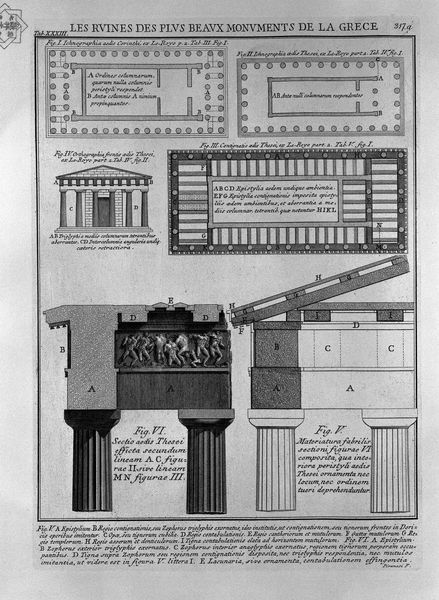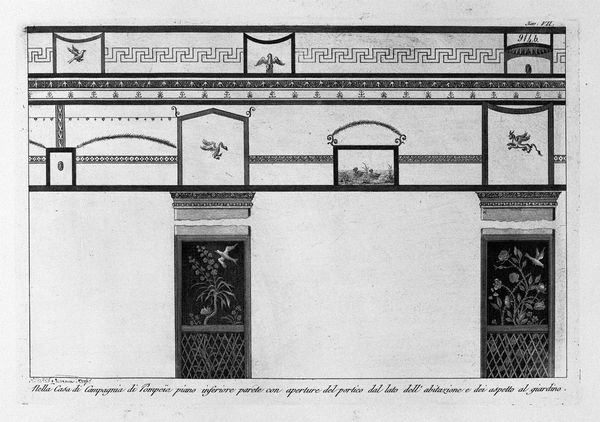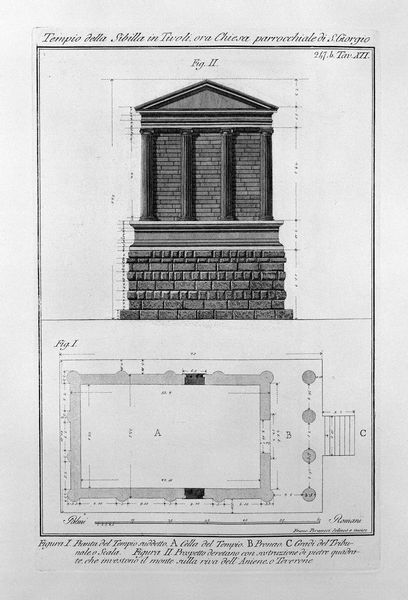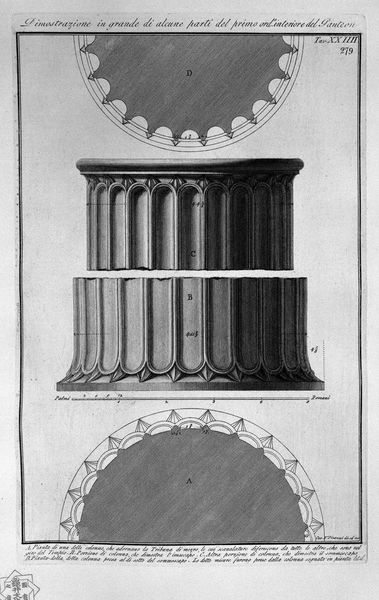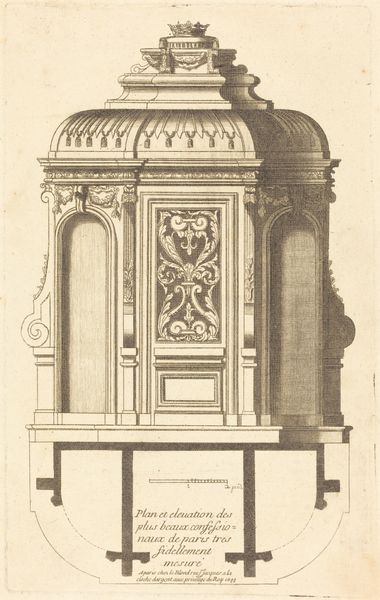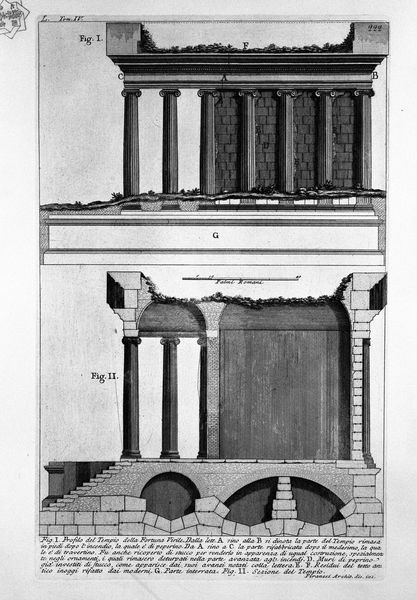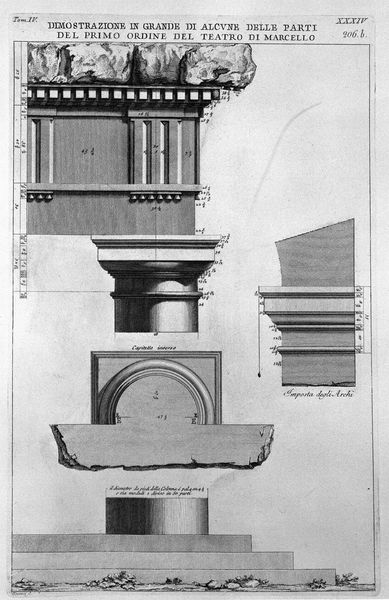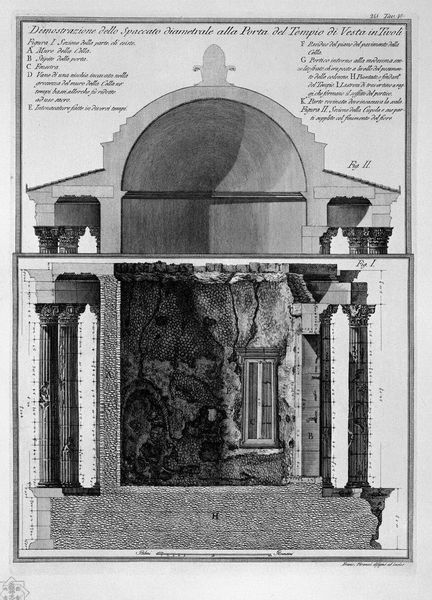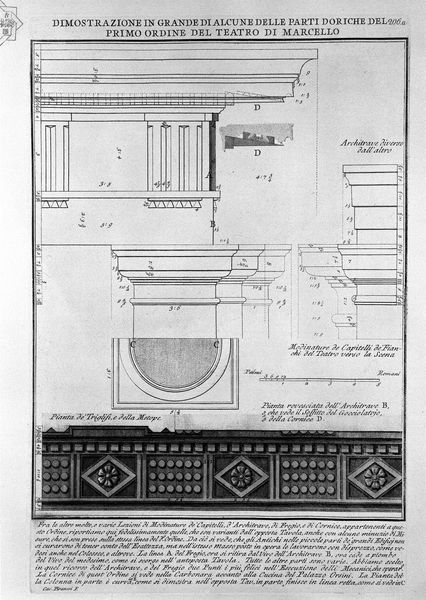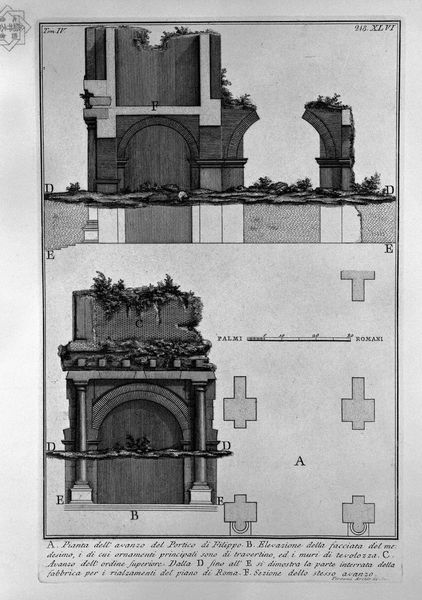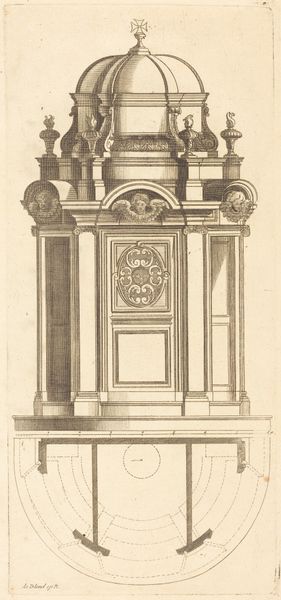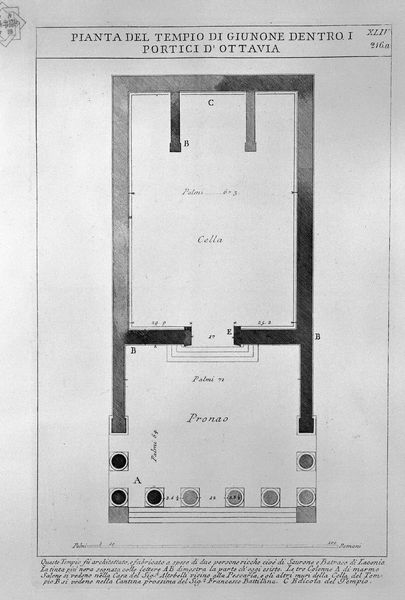
drawing, print, engraving, architecture
#
drawing
# print
#
classical-realism
#
perspective
#
charcoal drawing
#
charcoal art
#
history-painting
#
charcoal
#
engraving
#
architecture
Copyright: Public domain
This etching, Plan and Elevation of the Second Temple Tuscan Vitruvius, was made by Giovanni Battista Piranesi in the 18th century. With careful lines etched into a metal plate, Piranesi depicts architectural structures inspired by ancient Roman designs. Look closely and you'll notice the plan and elevation reveal the precise details of classical architecture; each stroke meticulously conveys proportion and scale. The etching process itself involves skilled labor, transforming the artist's vision into reproducible form. This printmaking technique allowed for widespread dissemination of architectural knowledge at the time, catering to growing interest in classical forms. This reflects a broader social and economic context, where detailed reproductions became essential tools for architects, scholars, and enthusiasts alike. The print embodies the knowledge and labor inherent in both architecture and the graphic arts. By considering the materials, making, and context of this artwork, we recognize the complex interplay between art, craft, and broader cultural movements.
Comments
No comments
Be the first to comment and join the conversation on the ultimate creative platform.
